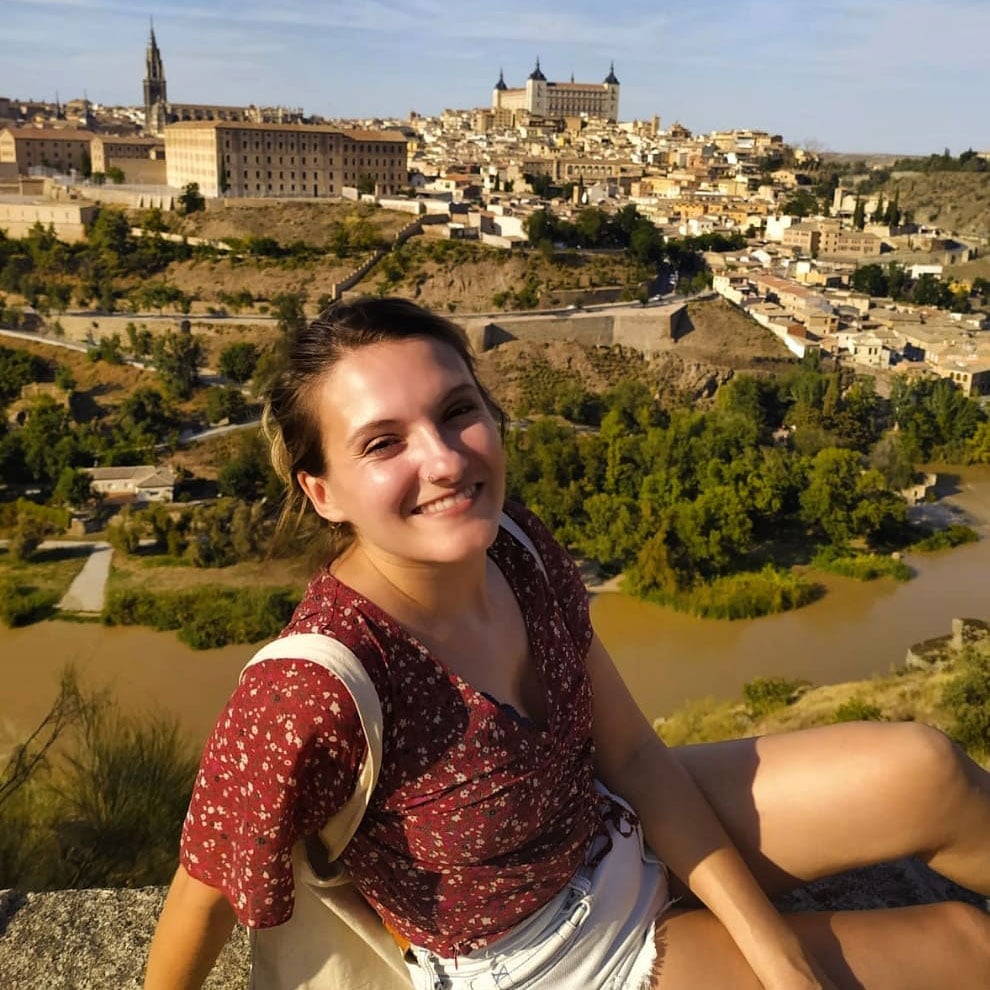Unbeknown to most, Spain is the third largest wine producer in the world behind France and Italy. The Spanish also love nothing more than the combination of delicious food washed down with delicious wine. Think tapas and Tempranillo, paella and Cava, or pinchos and Rioja – I’m beginning to salivate already!
The best part of it all? I’m here to provide you with my firsthand experience of Spanish wines and their wine producing regions. Like France and Italy, Spain also has their own appellation control known as DO and DOCa (Denominación de Origen and Denominación de Origen Calificada respectively).
So wine tourism is becoming increasingly popular: you travel to a country and tour their wine regions, learn about them, and drink GREAT vino. I mean, is there anything better than that!?
Now, I’ve experienced some of the best Spain winery tours for you. I know, I know, I didn’t have to. But really, I insisted.
These tours are run by locals who know the wine regions backwards and can offer you authentic, regional-based tours with some of the best wines available. So, without any further delay, let’s get cracking!
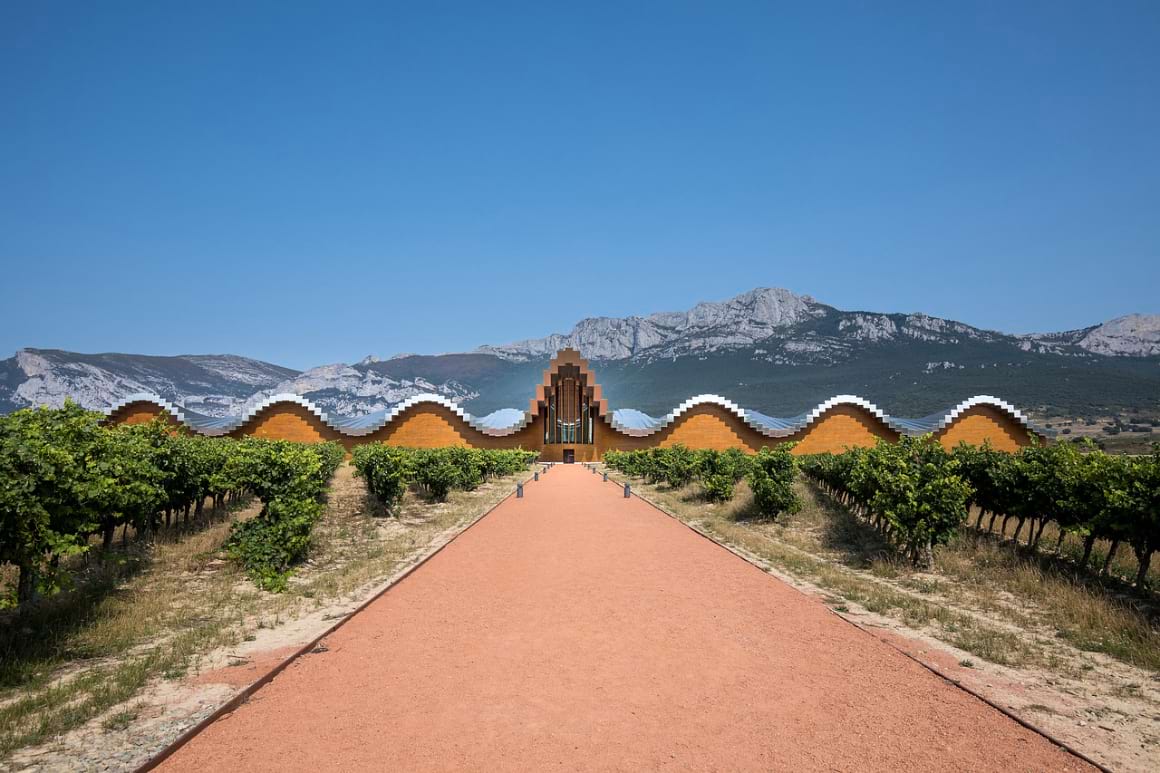
What is a Vineyard Tour?
A perfect starting point is to establish what exactly a vineyard tour is… A vineyard tour (or winery tour as they are sometimes referred to) is essentially all in the name. You are taken to the very heart of a wine region, usually departing from a major town or city, and immersed in the local wineries.
You will learn about the history of the winery, as well as the region, the farming techniques, grape varieties grown there, and a whole lot more. Oh, I almost forgot about the best part of these winery tours in Spain: you will get to taste (and drink) delicious Spanish wines! That’s why we’re here, right?
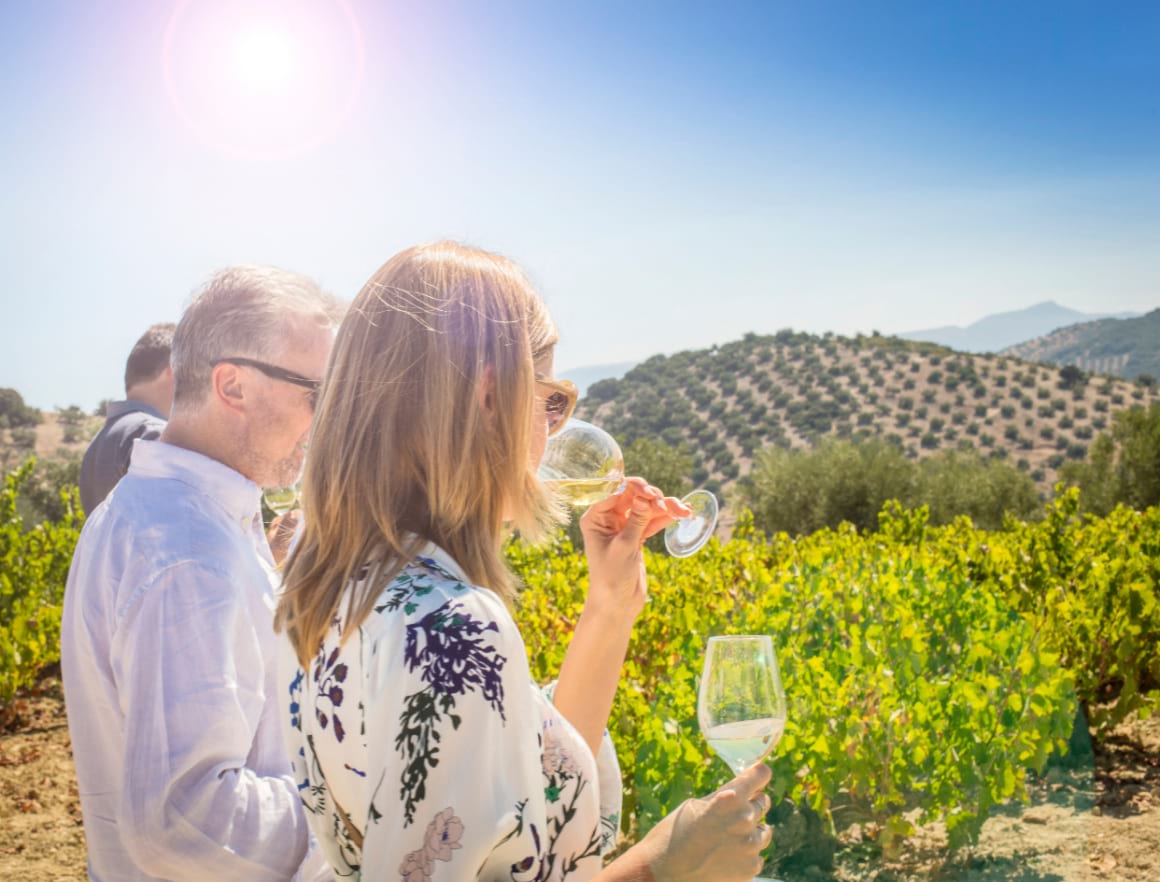
Above all, vineyard tours are fun way to travel around Spain and a great way for producers to showcase their products and tell their stories. Without consumers, wineries wouldn’t be able to sell their wines. And without wineries, consumers wouldn’t be able to drink wine – it’s very much a symbiotic relationship.
Before we get down to the best winery tours in Spain for 2024, let’s take a quick look at the various wine regions in the country.

Our GREATEST Travel Secrets…
Pop your email here & get the original Broke Backpacker Bible for FREE.
Wine Regions of Spain
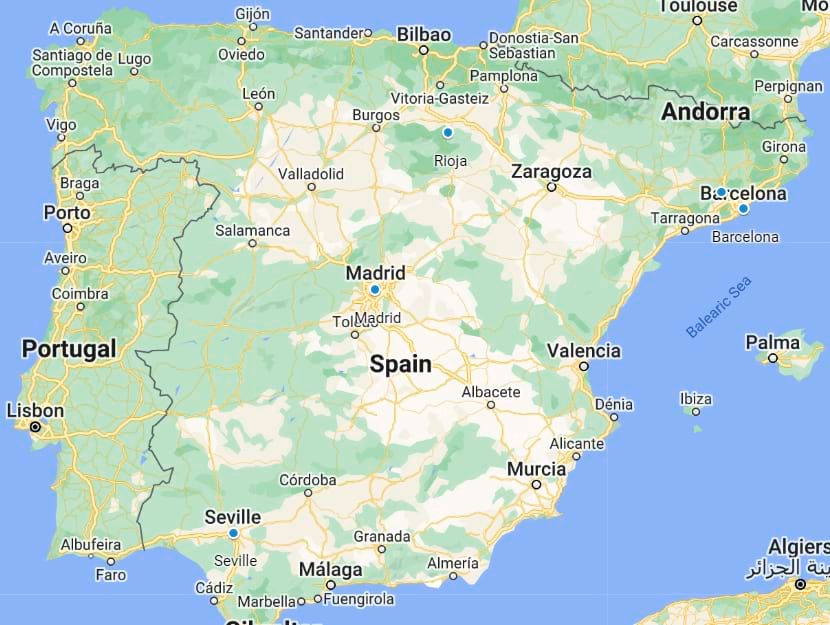
While Spanish wines tend to fly under the radar, so to speak, wine production has been going on for many years in the country. They produce a large variety of wine styles, from sparkling Cava to delicate whites and opulent reds.
Spain also has a huge diversity in topography and climate which means there is a large variety of unique wine-growing regions. Each region has unique soils, weather, landscape, and altitude which allows for a huge variety of wine styles to be produced.
With all this variety, one thing remains the same – that the quality of the wines is top-notch. And the beauty about having so many wine regions is that, no matter where you stay in Spain, you’re never far away from a great vineyard. This is perfect for wine tourism and the main reason why we’re here.
Let’s take a look at the various wine regions that I’ll be covering in this post!
Barcelona
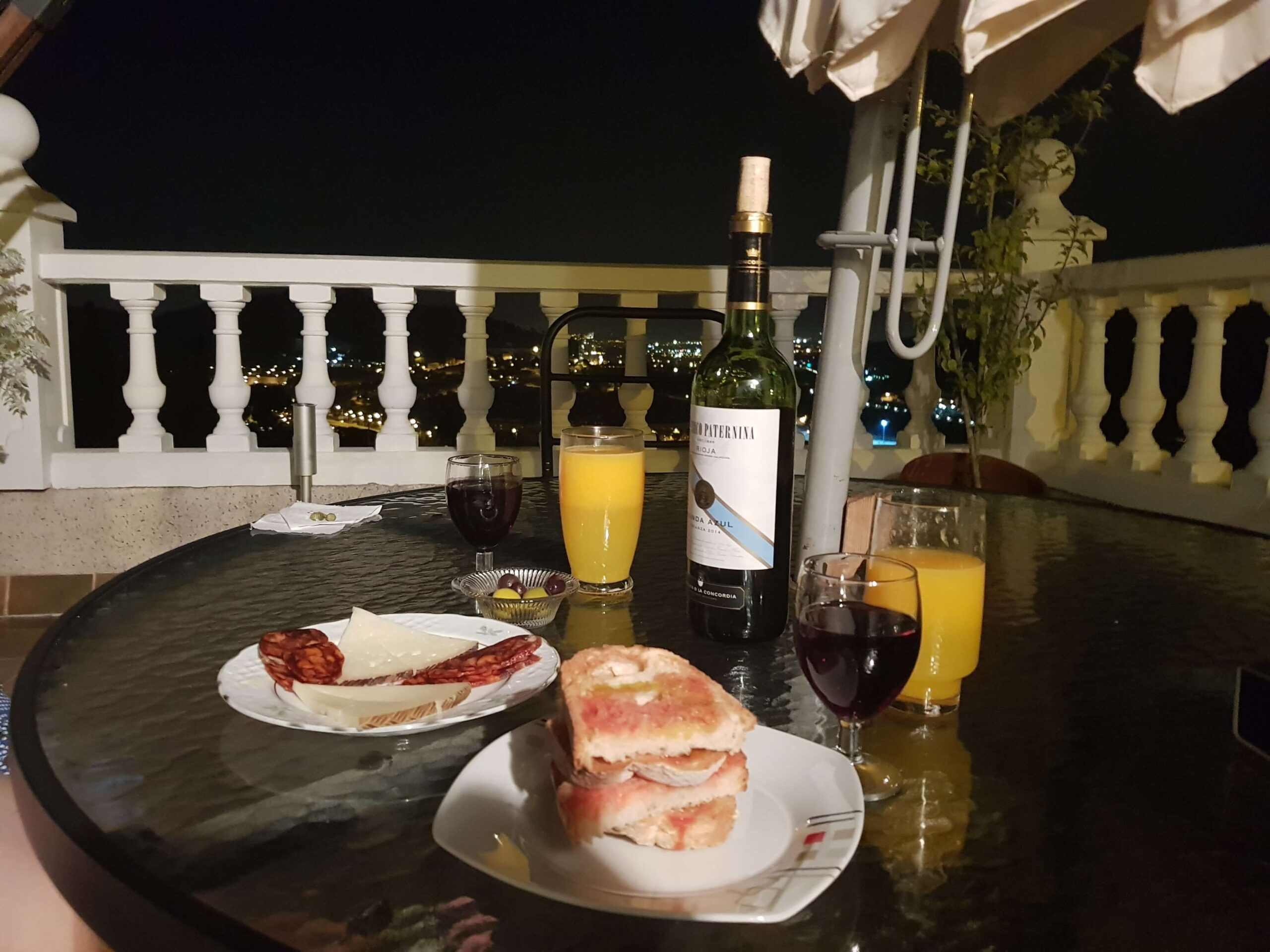
Photo: @Lauramcblonde
Barcelona falls within the Catalunya DO – a region that is responsible for around 90% of cava production in the country. Catalunya DO is found in northeast Spain and, as well as visiting Barcelona, the area is well-known for its amazing food and wine, beaches, and unique rural areas.
The region borders the Mediterranean Sea to the east and to the north are the eastern stretches of the French Pyrenees. Because of the proximity to the sea, the climate is very much maritime influenced, which plays a role in the grape quality.
Speaking of grapes, some of the main varietals grown in the region include Garnacha (Grenache), Tempranillo, Macabeo (Viura), Monastrell (Mourvèdre), Carinyena (Carignan), Xarel·lo, and Parellada. There are also many other international grape varietals grown given the diverse climate and terroir of the region.
Two of the most notable appellations are the Penedes DO and the Priorat DOC. Other DOs include Emporda, Terra Alta, Alella, Conca de Barbera, Montsant, and Tarragona.
Madrid
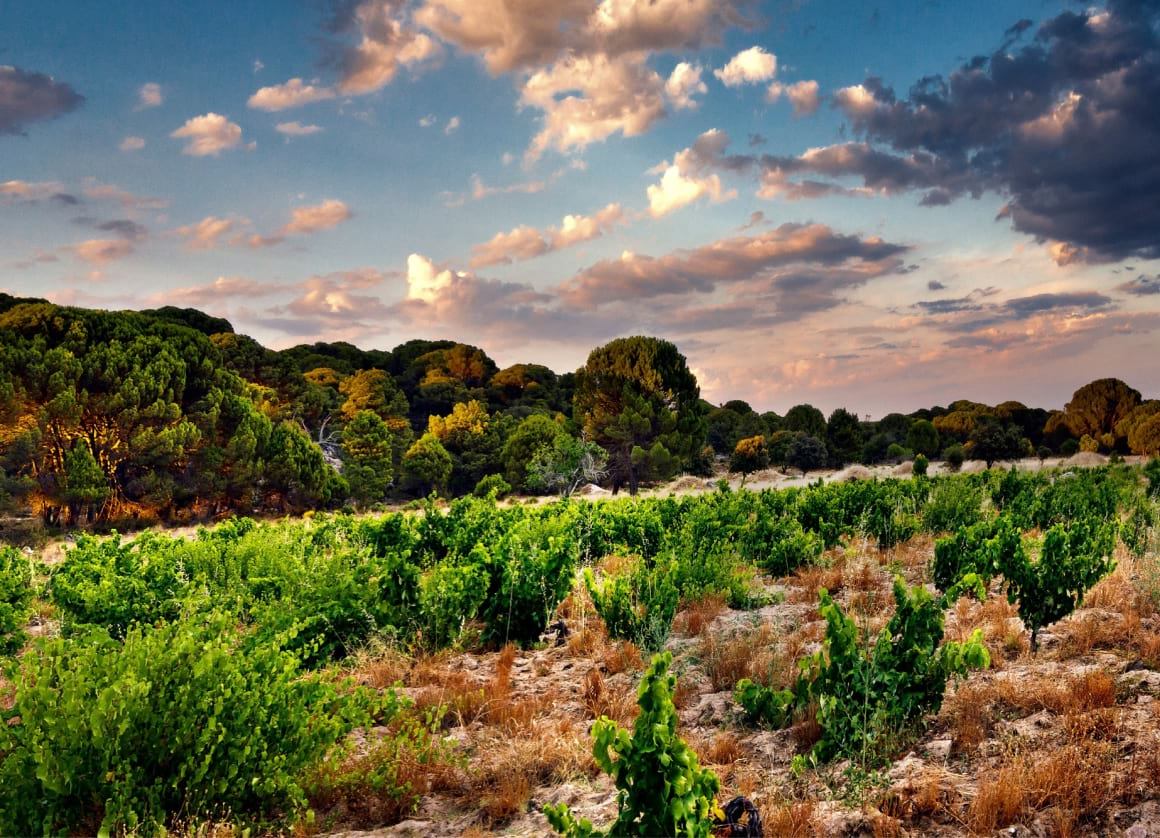
The Madrid wine region, or DO Vinos de Madrid as it is formally known, is found almost in the dead centre of the country with Castilla-la Mancha adjacent. Home to the country’s capital, the region can be divided into three sub-zones namely Arganda, San Martin, and Navalcarnero.
Each of these areas are easy to reach if you’re travelling to Madrid, each with its own predominant varietal that is grown there. Arganda is more tempranillo based while San Martin is more Garnacha (Grenache) based and Navalcarnero is usually a combination of the two varietals. Albillo Real and Malvar are the main white varietals used in different proportions in the region.
The soils also differ quite substantially, ranging from clay and loam in Arganda to more granitic and weathered-rock soil in San Martin. The region experiences a continental climate and usually experiences long, hot summers and cold winters. Wines from the region are also classified according to their ageing process such are Sobremadre, Espumosos (Sparkling), Joven, Crianza, Reserva, and Gran Reserva.
Rioja
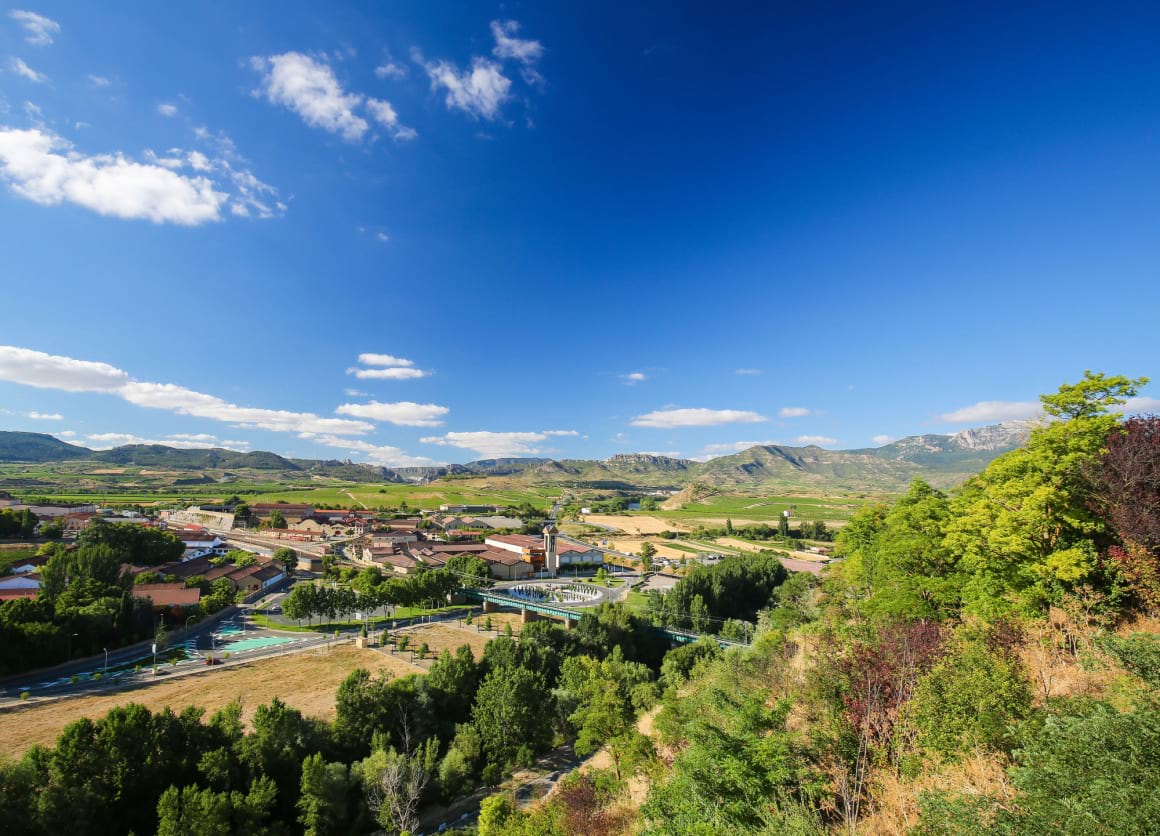
Rioja is by far the most famous of the Spanish wine regions, located in the north of the country. It is also only one of two that holds the prestigious DOC status. La Rioja runs along the Ebro River for about 62 miles and is alongside the Navarra region.
Red wines from Rioja are generally made from Garnacha and Tempranillo and the region is most well-known for its esteemed tannic, bold, and smoky red wines. Mazuelo (Carignan) and Graciano are also used in Rioja reds as well as small quantities of Cabernet Sauvignon. There isn’t much in the line of white wines produced in the region, but they are produced predominantly Macabeo (Viura) and Chardonnay.
The soils vary somewhat in Rioja but the most prized are the limestone-rich ones found in the region. The Cantabrian Mountains provide a barrier between the Atlantic Ocean and Rioja, resulting in hot, dry conditions. Another important note is the sub-regions within Rioja – Rioja Alta, Rioja Alavesa, and Rioja Oriental. The wines from the regions can be further classified into Joven, Crianza, Reserva, and Gran Reserva.
Montserrat
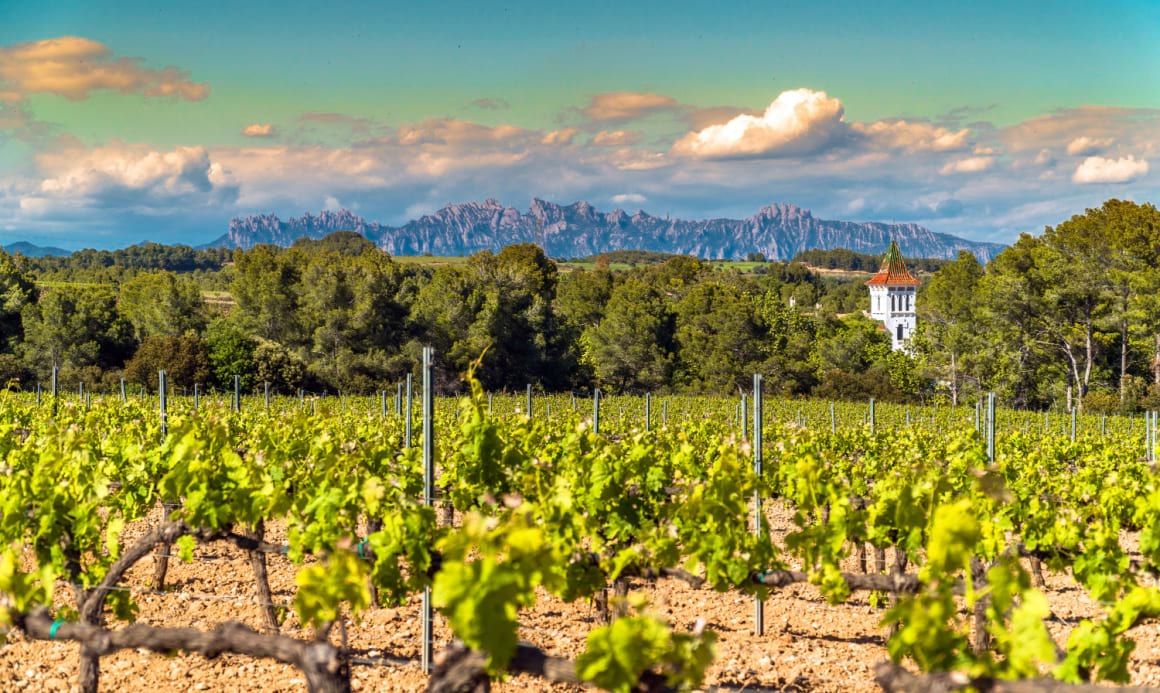
The Montserrat Mountain is located in the Penedès region, northwest of Barcelona. The region is one of the most important in the entire Catalunya due to the variety in style and the sheer volumes produced. White, red, and rosé wines are made in dry, sweet, and sparkling styles. It is also one of the largest producers of Cava in the region.
There is a large variation in topography resulting in a range of micro-climates and as a result, a variety of wine styles. The climate is Mediterranean-influenced with warm summers, mild winters, and little rainfall. Grape varietals permitted for red wine production are Monastrell, Garnacha, Carinena, and Tempranillo, although it is known as Ull de Llebre. For white grape varietals, it is very much influenced by those used for Cava, such as Xarel-lo, Macebo, and Parellada as well as portions of Chardonnay.
The region can interestingly be divided up into three sub-zones based on their climates. These are Baix Penedès, Alt Penedès, and Medio Penedès. Baix Penedès are the lower-lying, hotter areas responsible for full-bodied red wines while Alt Penedès are the higher altitude areas (1,640 – 2,625ft) responsible for fresher white wines. Medio Penedès is the area between the two where the Baix transitions to Alt.
Seville
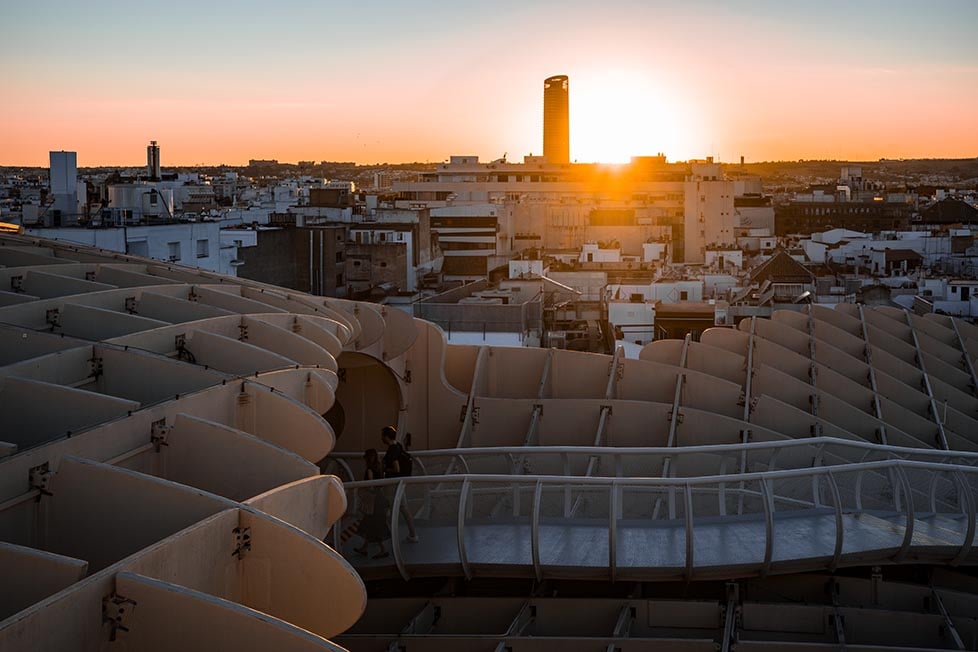
Image: Nic Hilditch-Short
The final region to cover is found down in the southwest of Spain – to the east, south, and west if you’re staying in Seville. The Andalucia region is most famously known around the world for its production of sherry, a type of fortified wine made predominantly from the Palomino grape.
Again, the region can be divided into three zones based on the significantly different climates of each. To the west are the main sherry-producing areas of Jerez and Sanlucar de Barrameda which are influenced by the cooler Atlantic conditions. To the south, areas like the Sierras de Malaga and Malaga experience a more Mediterranean-influenced climate. Finally, the Montilla-Moriles experience the hottest and driest conditions of all three of the climate zones.
These climatic zones very much influence the wines that are produced in each area. The areas of Montilla-Moriles, Malaga, and the Sierras de Malaga are responsible for the production of the region’s signature sweet wines. These somewhat heavy sweet wines are made from Moscatel (Muscat) and the famous Pedro Ximenez varietals. The Jerez and Sanlucar de Barrameda areas are much cooler and therefore help to maintain acidity in the Palomino grapes used for the Manzanilla and Fino sherries.

We’ve tested countless backpacks over the years, but there’s one that has always been the best and remains the best buy for adventurers: the broke backpacker-approved Osprey Aether and Ariel series.
Want more deetz on why these packs are so damn perfect? Then read our comprehensive review for the inside scoop!
View on Osprey View on REIThe Best Spain Winery Tours
Now we can move on to the party end of the article – the list of the best vineyard tours in Spain. There are in excess of 4,000 wineries in Spain alone. So travelling around the whole of Europe makes picking good winery tours next to impossible.
However, I’ve gone and done some digging and found some of the best tours that money can buy. They all leave from different cities or towns so you can just simply pick one closest to where you’ll be staying and the rest will be taken care of – it’s that easy!
Barcelona Wine Tour

- Marçà-Falset train station
- Full day
- $246
What better way to kick off the winery tours in Spain than to one of only two DOCas in the country, Priorat? The tour is unlike any other that you have experienced. If you’re staying in Barcelona, you take a 2-hour train ride and meet at the Marçà-Falset train station where the tour begins!
From then on, it’s pure bliss, starting with a great view of the whole region from an elevated viewpoint. You will then visit two historic Priorat wineries and get to taste some of their best vinos – prepare to have your mind blown! There is also a visit to the Carthusian monastery followed by an olive oil tasting and lunch.
Madrid Wine Tour
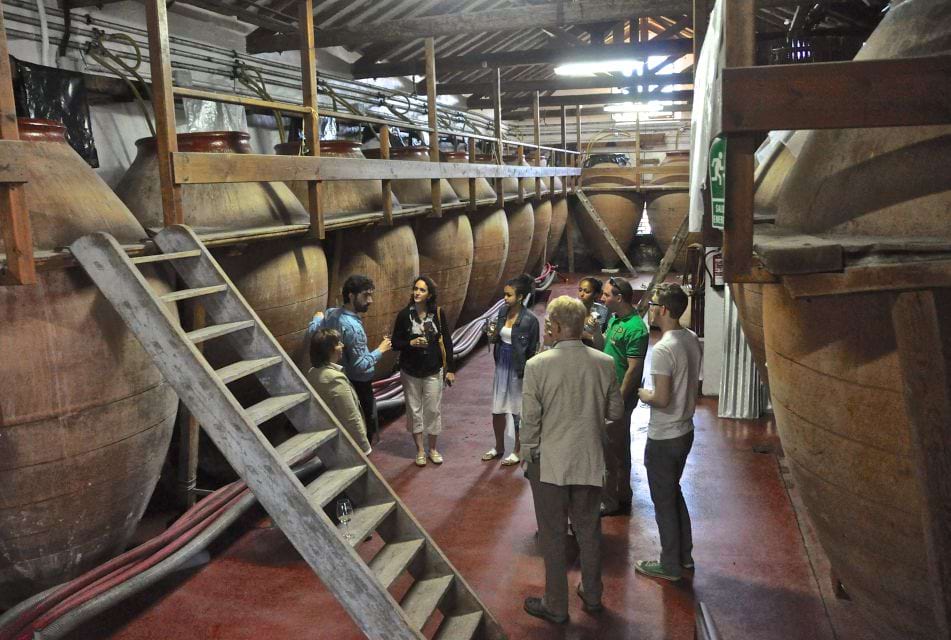
- Madrid
- 6 hours
- $158
The tour departs from the city centre and heads out into the picturesque countryside. The beauty is that the Madrid wine region is only a short commute from your accommodation in the city. You will get to see the rows upon rows of Tempranillo plantings used to produce some of the region’s top wines.
However, the best part of the tour is the visit to not one, not two, but three local wineries! At each winery, you will learn about their farming methods, production techniques, and the traditional clay vessels that house the wines during their maturation process. You will, of course, also get to taste wines at each estate. That’s why we’re here, right?
Rioja Wine Tour
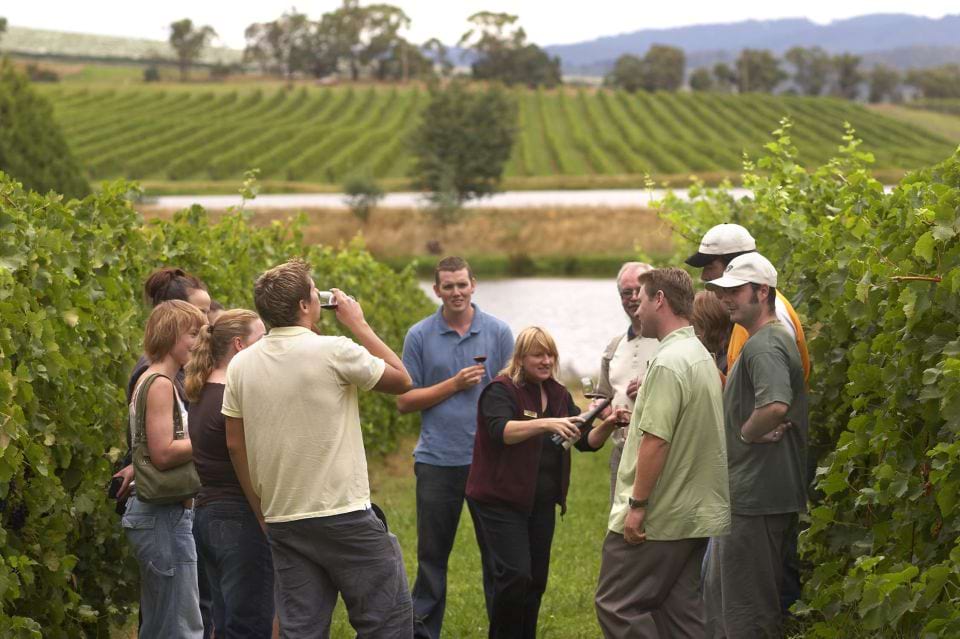
- San Sebastian, Bilbao, or Vitoria
- 7.5 – 9 hours
- $251
Now we’re whipping out the big guns – a tour to the most famous wine region in Spain, La Rioja! The tour departs from either San Sebastian, Bilbao, or Vitoria where you get picked up from your hotel and taken to the La Rioja Alavesa area. La Rioja is a special wine-making territory, no doubt, and you will learn about what makes the region so spectacular on this tour.
The tour includes a visit to a traditional winery where you will learn how these world-famous wines are produced. You will then get to taste through some of the estate’s wines followed by a traditional, wine-filled lunch made with local produce. There’s even dessert included – because I am not sweet enough. You’ll leave the region with a full stomach, a satisfied palette, and a new knowledge and understanding of the Rioja wine region.
Montserrat Wine Tour
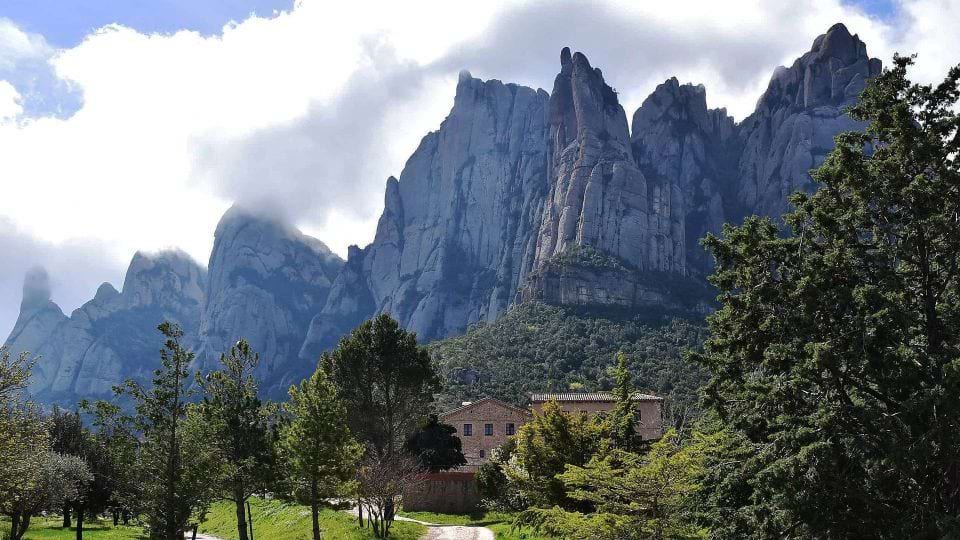
- Barcelona
- 10 hours
- $108
Montserrat is only Catalunya’s most famous mountain range – no big deal, right? This tour really has it all and incorporates both wine and culture together for a full day of fun. You will depart from Barcelona towards the Catalan Pre-Coastal Range with your first stop being at the world-famous Benedictine Abbey of Santa Maria de Montserrat. After visiting the monastery and its attractions, you will get the chance to listen to one of Europe’s oldest children’s choirs, La Escolania de Montserrat.
Once the historical and cultural aspects of the tour have finished, it’s on to learning about Cava – Spain’s very methode champanoise. You will head down to La Escolania de Montserrat which is in the heart of the region where you’ll visit a Cava winery and learn about the centuries-old production. The tour is then topped off with a tasting of three local wines and Cava’s as well as some local Catalan cheeses and meats.
Seville Wine Tour
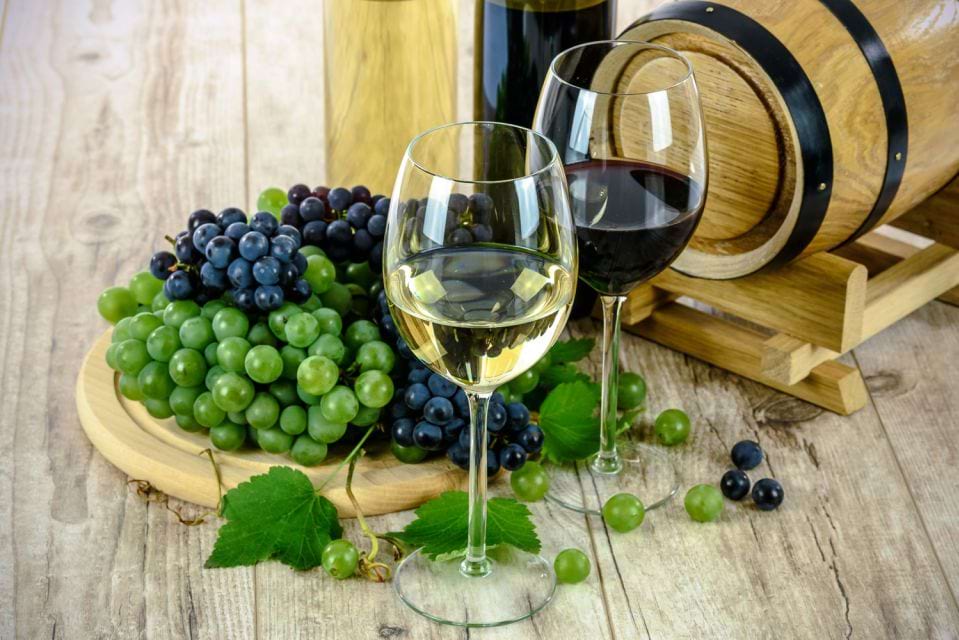
- Seville
- 4 hours
- $97
Rounding off the list of Spain wine tours is a guided half-day wine tour in Andalusia. The tour departs from Seville where you will be picked up from your hotel and then driven out to the south-west of Andalusia. You will get to visit traditional Andalusian wineries and/or cognac producers, depending on the day.
At the winery, you will learn all about the production of the traditional wines of the area, from the grapes used to the production techniques and the ageing of the wines. The tour then ends off with a tasting of the wines to get the final piece of the puzzle and experience the finished products.
The tour then heads back to the city, but not before passing through the scenic countryside for one last view of the wine region. It’s also the perfect tour for those who don’t have the advantage of time on their hands or don’t wish to be out the entire day.
Worry Less With Good Insurance
Wherever you’re going in the world, things don’t always go to plan. That’s just the way it works. So getting good travel insurance is vital to taking care of yourself.
ALWAYS sort out your backpacker insurance before your trip. There’s plenty to choose from in that department, but a good place to start is Safety Wing.
They offer month-to-month payments, no lock-in contracts, and require absolutely no itineraries: that’s the exact kind of insurance long-term travellers and digital nomads need.
SafetyWing is cheap, easy, and admin-free: just sign up lickety-split so you can get back to it!
Click the button below to learn more about SafetyWing’s setup or read our insider review for the full tasty scoop.
Final Thoughts on Spain Wine Tours
That now unfortunately brings us to the end of the best Spain wine tours (sniff-sniff). However, just because the door has closed on this article, doesn’t mean it’s over. This is just the beginning of your wine tourism escapades!
I sincerely hope that this guide comes in super handy when you’re looking to book your next winery tour adventure or if you’re looking to learn a bit more about Spanish wines. The world is your oyster, and with such a choice of winery tours in Spain, you certainly are a lucky shucker!
So, book that flight, accommodation, and vineyard tour and hit the road. Those delicious Spanish cavas, riojas, and sherries aren’t going to drink themselves. Someone needs to do it…
(Hint – that someone is you!) Happy travels and wine-drinking! Salud!

Image: Nic Hilditch-Short

And for transparency’s sake, please know that some of the links in our content are affiliate links. That means that if you book your accommodation, buy your gear, or sort your insurance through our link, we earn a small commission (at no extra cost to you). That said, we only link to the gear we trust and never recommend services we don’t believe are up to scratch. Again, thank you!



